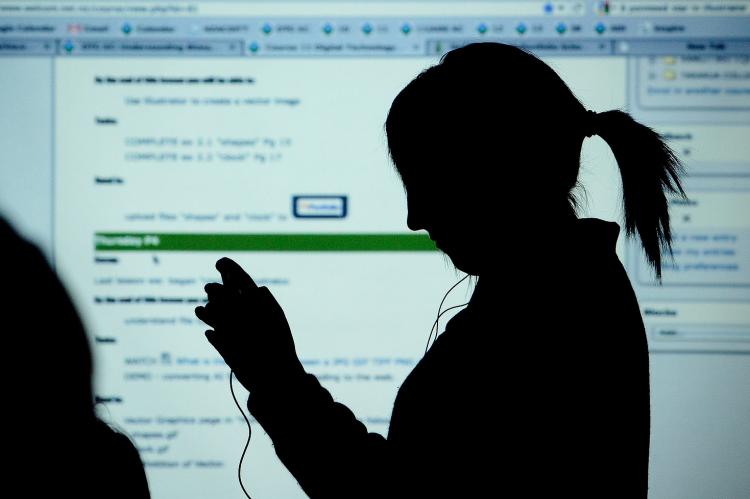Understanding musical theory through GarageBand
Tags: The Arts | Multimedia – audio/music/sound | Primary | Upper primary |
Students at Somerville Intermediate School explored complex musical theory and created sophisticated musical compositions using GarageBand.
"In our school, we regularly inquire into the way higher order learning, enabled by digital technologies, meets learners’ needs. "
eLPF 2014
Creating a supportive learning environment
The classroom teacher wanted to introduce the concepts of transposition and harmonic progression to her specialist music class but knew that students without a background in formal music theory would find the new learning challenging.
Transposition
- Notating or playing a melody, section of a piece, or complete work in a different key to that of the original.
Harmonic progression
- A series of chord changes forming the underlying harmony of music.
She decided to teach these musical concepts with the help of GarageBand . GarageBand allows users to create music in a visual, aural, and tactile environment. It is easy to use and students can make numerous changes to their work, constantly refining their compositions.
Understanding and creating music
The teacher invited students to use GarageBand at the beginning of the learning sequence to explore composition. They were quickly able to create accurate compositions without being taught the concepts of ‘correct’ harmonic progressions.
“Completing this task before the class discussion about harmonic progression was really important to me because I found that the students already had a basic understanding of what was going on even when we weren’t using any of the correct theory terms.”
Louise Field (teacher)
Following a class discussion, students crafted compositions with deeper understandings of music structure. They copied and pasted a single acoustic loop several times to create a harmonic progression before using the track editor to change the pitch of individual loops. The variety of loops available on GarageBand gave students access to a range of instrumental sounds.
What happened as a result of the teaching?
Knowledge outcomes
- Students gained a basic knowledge of how chords should progress in a composition
- Students understood that compositions mostly begin and end with the same chord
- Students were able to create harmonic progressions using GarageBand
- Students were able to transfer this knowledge to create short compositions using guitar chords or keyboards.
Development of competencies
Students created compositions in groups of 3 or 4 which required them to listen, share ideas, and negotiate.
“Using a traditional theory workbook scenario would mean that I would have a class of students sitting at tables and writing individually on their theory sheets. Approaching the concepts using computers ... instantly gives those students the opportunity to develop key competencies, namely participating and contributing, and ... relating to others.”
Louise Field (teacher)
Connections with the community
During the learning, the students’ musical compositions were converted into MP3 format. The MP3 files were shared with family, whānau, and friends.
“We can upload the files onto the Internet, they can be put onto CD, you can store them on an iPad or an iPod, and you can email them. You’ve then again opened the door between school and home and that allows Mum and Dad instant access to be able to see what their child did at school today.”
Louise Field (teacher)
See also: an associated snapshot of learning - Creating dance tracks using GarageBand .
